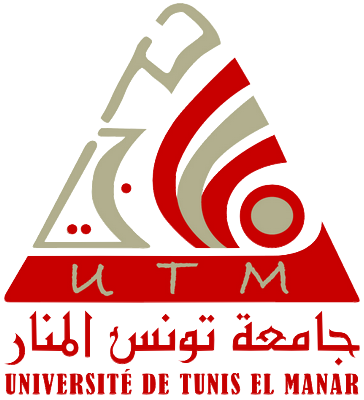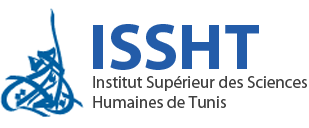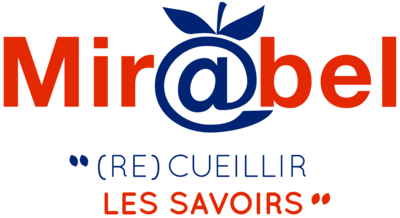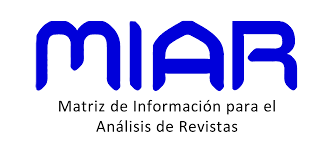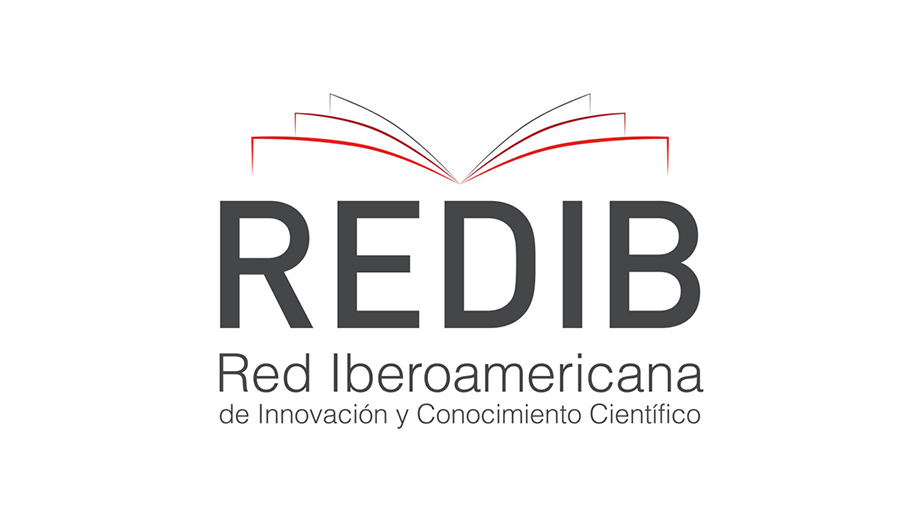Bilingualism of the Non-Spanish-Speaking Immigrant Population in Spain: Importance, Empowerment and Schooling
DOI:
https://doi.org/10.71564/dh.vi6.66Keywords:
Bilingualism, Emigration, Education, Integration, IdentityAbstract
There are many factors that affect the acquisition of the majority language (as it is Spanish in Spain) by children and young people of immigrant origin, and one of the most important is the education system. However, for this education system to be productive for the members of linguistic minorities, it is necessary for teachers to understand the cognitive processes, the attitudes and the strengths of their students in relation to the majority language. This article aims to be a tool that shows teachers aspects as: a) The relation that non-Spanish people have with both the socially majority language and their family language; b) What is bilingualism and what does it mean for bilingual people; c) The stages that people go through when they learn the society majority language; and d) The need for non Spanish speaking people to benefit from early schooling.
Downloads
References
ANDROUSOU, A. [ΑΝΔΡΟΎΣΟΥ, Α.] (2005). Πώς σε λένε; Διεργασίες μιας επιμορφωτικής παρέμβασης στη μειονοτική εκπαίδευση. Atenas: Gutenberg.
ANISFIELD, M. (1984). Language Development from Birth to Three. London: Lawrence Erlbaum.
ARDILA, A. (2012). “Ventajas y desventajas del bilingüismo”. Forma y Función, 25 (2): 99-114.
ARDILA, O. (2004). “Bilingüismo, definición y tipos de bilingüismo”. Boletín de la Academia Colombiana, 56 (225): 175-177.
AZEZ, K. [ΑΖΕΖ, Κ.] (1999). Το παιδί ανάμεσα σε δύο γλώσσες. Atenas: Polis.
BALKAN, L. (1979). Los efectos del bilingüismo en las aptitudes intelectuales. Madrid: Marova.
BAKER, C. (1998). Encyclopedia of Bilingualism and Bilingual Education. Clevedon: Multilingual Matters.
BAKER, C. (2017). Foundations of Bilingual Education and Bilingualism. Clevedon: Multilingual Matters.
BEDORE, L. M y E. D. PEÑA (2008). “Assessment of Bilingual Children for Identification of Language Impairment: Current Findings and Implications for Practice”. International Journal of Bilingual Education and Bilingualism, 11 (1): 1-29.
BELLA, S. [ΜΠΈΛΛΑ, Σ.] (2007). Η δεύτερη γλώσσα. Κατάκτηση και διδασκαλία. Atenas: Ellinika Grammata.
BERTHELE, R. (2011). “On Abduction in Receptive Multilingualism. Evidence from Cognate Guessing Tasks”. Applied Linguistics Review, 2: 191-220.
BIALYSTOK, E. (2001). Bilingualism in Development: Language, Literacy and Cognition. Cambridge: Cambridge University Press.
BLOOM, L. (1991). Language Development from Two to Three. Cambridge: Cambridge University Press.
COHEN, D. y V. STERN (1991). Παρατηρώντας και καταγράφοντας τη συμπεριφορά των παιδιών. Atenas: Gutenberg.
Convenio de cooperación cultural entre el Gobierno de España y el Gobierno del Reino de Marruecos. Hecho en Rabat el 14 de octubre de 1980. Boletín Oficial del Estado, 243, de 10 de octubre de 1985: 31958-31961 [www.boe.es/buscar/doc.php?id=BOE-A-1985-20897].
CUMMINS, J. (2008). “BICS and CALP: Empirical and Theoretical Status of the Distinction”. En B. STREET y N. H. HORNBERGER (eds.), Encyclopedia of Language and Education (2). Nueva York: Springer, 71-83.
CUMMINS, J. (2005). Ταυτότητες υπό διαπραγμάτευση. Εκπαίδευση με σκοπό την ενδυνάμωση σε μια κοινωνία της ετερότητας. Atenas: Gutenberg.
DAMANAKIS, M. [ΔΑΜΑΝΆΚΗΣ, Μ.] (1987). Μετανάστευση και εκπαίδευση. Atenas: Gutenberg.
——— (2000). Η εκπαίδευση των παλιννοστούντων και αλλοδαπών μαθητών στην Ελλάδα. Διαπολιτισμική προσέγγιση. Atenas: Gutenberg.
DÖPKE, S. (1998). “Can the Principle of 'One Person-One Language’ Be Disregarded as Unrealistically Elitist?”. Australian Review of Applied Linguistics, 21 (1): 41-56.
GASS, M. S. y J. SCHACHTER (1989). Linguistic Perspectives on Second Language Acquisition. Cambridge: Cambridge University Press.
GROSJEAN, F. (2008). Studying Bilinguals. Oxford: Oxford University Press.
HAKUTA, K., E. BIALYSTOK y E. WILEY (2003). “Critical Evidence: A Test of the Critical Period Hypothesis for Second Language Acquisition”. Psychological Science, 14 (1): 31-38. [www.stanford.edu/~hakuta/www/docs/CriticalEvidence.pdf].
HAN, Z. H. (2004). “Fossilization: Five Central Issues”. International Journal of Applied Linguistics, 14 (2): 212-242.
HUGUET, Á., J. L. NAVARRO, S.-M. CHIREAC, Y C. SANSÓ (2009). “Edad de llegada y lengua de la escuela. Consideraciones a partir de un estudio con alumnado inmigrante”. Revista de Psicología General y Aplicada, 62 (3), 219-229.
IBARRA MURILLO, O. (2014). “Tipología y pragmática del code-switching vasco-castellano en el habla informal de jóvenes bilingües”. Lapurdum: euskal ikerketen aldizkaria, 18: 23-40.
INE (INSTITUTO NACIONAL DE ESTADÍSTICA). (08/01/2020). CP - 1 de julio de 2019 y EM - Primer semestre de 2019. Datos provisionales (2/11) [www.ine.es/prensa/cp_j2019_p.pdf].
KOILIARI, A. [ΚΟΙΛΙΆΡΗ, Α.] (2005). Πολυγλωσσία και γλωσσική εκπαίδευση. Μια κοινωνιογλωσσολογική προσέγγιση. Tesalónica: Vanias.
KOSTOULA-MAKRAKI, N. [ΚΩΣΤΟΎΛΑ-ΜΑΚΡΆΚΗ] (2001). Γλώσσα και κοινωνία, Βασικές έννοιες. Atenas: Metaichmio.
LAMBERT, W. E. (1977). “The effects of Bilingualism on the Individual: Cognitive and Sociocultural Consequences”. En P. HORNBY (ed.), Bilingualism: Psychological, Social and Educational Implications. Nueva York: Academic Press, 15-28.
LAMBERT, W.E. (1974). “Culture and Language as Factors in Learning and Education”. En F. ABOUD y R. D. MEADE (eds.), Cultural Factors in Learning. Bellingham: Western Washington State College.
LEONTARIDI, E. e I. GÓMEZ LAGUNA (2018). “Criando niños bilingües: sobre la adquisición simultánea de español y griego como segunda L1”. Ogigia, 23: 69-95.
LAMBELET, A. y R. BERTHELE (2014). Âge et apprentissage des langues à l'école: Revue de Littérature. Fribourg: Institut de Plurilinguisme.
MANI, E. [ΜΆΝΗ, Ε.] (2014). Η ανεπίσημη προσχολική εκπαίδευση της ελληνικής μειονότητας στην Κωνσταντινούπολη: εκμάθηση της ελληνικής γλώσσας και γλωσσικά δεδομένα. Tesis de máster inédita. Universidad Aristóteles de Tesalónica.
MECD (2019). Estadística de las Enseñanzas no universitarias. Datos avance 2018-2019 [disponible en www.educacionyfp.gob.es: https://bit.ly/3mwOyLv].
MORILLA GARCÍA, C. (2017). "The Role of Emotional Intelligence in Bilingual Education". REMIE, 7 (1): 27-52.
NAVARRO SIERRA, J. L. y A. HUGUET CANALIS (2010). “Conocimiento del catalán y castellano por parte del alumnado inmigrante”. Revista de Educación, 352: 245-265.
ORTIZ SANDOVAL, L. (2012). “Bilingüismo y educación: la diferenciación social de la lengua escolar”. América Latina Hoy: Revista de Ciencias Sociales, 60: 139-150.
PEAL, E. y W. E. LAMBERT (1962). “The Relation of Bilingualism to Intelligence”. Psychological Monographs: General and Applied, 76 (27): 1-23.
PÉREZ-LUZARDO DÍAZ, J. y A. SCHMIDT (2016). “El bilingüismo y la identidad: estudio de caso sobre la relación entre las lenguas y las emociones”. Revista de Lingüística y Lenguas Aplicadas, 11: 51-59.
RAHONA LÓPEZ, M. y MORALES SEQUERA, S (2013). Educación e inmigración en España: desafíos y oportunidades. Madrid: OEI.
RICO-MARTÍN A. M. y M. A. JIMÉNEZ JIMÉNEZ (2013). “Desarrollo de la competencia plurilingüe en el aula: Una aproximación a la metodología de AICLE”. En J. L. LÓPEZ BELMONTE (ed.), Diversidad cultural y educación intercultural. Melilla: GEEEPP, 183-200.
PARIBAKHT, T. S. y M. B. WESCHE (1999). “Reading and Incidental L2 Vocabulary Acquisition: An Introspective Study of Lexical Inferencing”. Studies in Second Language Acquisition, 21: 195-224.
QIAN, D. D. (2004). “Second Language Lexical Inferencing: Preferences, Perceptions, and Practices”. En P. BOGAARDS y B. LAUFER (eds.), Vocabulary in a Second Language: Selection, Acquisition and Testing. Ámsterdam-Filadelfia: John Benjamins, 155-169.
ROMAINE, S. (1995). Bilingualism. Oxford: Blackwell.
SÁNCHEZ ABCHI, V. S. (2013). “Desarrollo discursivo en contexto multilingües: Un estudio contrastivo de niños bilingües y monolingües”. Lengua y Habla, 17 (1): 198-210.
SILVA CORVALÁN, C. (2015). “Infantes bilingües y hablantes de herencia adultos: ¿Qué los vincula?”. Boletín de filología, 50 (1): 165-191.
SKUTNABB-KANGAS, T. (1981). Bilingualism or Not. The Education of Minorities. Clevedon: Multilingual Matters.
TAYLOR, C. (1997). Πολυπολιτισμικότητα: Εξετάζοντας την πολιτική της αναγνώρισης. Atenas: Polis.
TOPPELBERG, C. O. y B. A. COLLINS (2010). “Language, Culture, and Adaptation in Immigrant Children”. Child and Adolescent Psychiatric Clinics of North America, 19 (4): 697–717.
TRIARHI-HERMANN, V. [ΤΡΙΑΡΧΗ-HERRMANN, B.] (2000). Η διγλωσσία στην παιδική ηλικία. Atenas: Gutenberg.
TSOKALIDOU, R. [Τσοκαλίδου, Ρ.] (2012). Χώρος για δύο. Θέματα διγλωσσίας και εκπαίδευσης. Tesalónica: Zygos.
VARLOKOSTA, S. y L. Triantafyllidou [ΒΑΡΛΟΚΏΣΤΑ, Σ. και Λ. Τριανταφυλλίδου] (2003). Επίπεδα γλωσσομαθειας στην ελληνικη ως δευτερη γλωσσα. Atenas: Kentro Diapolitismikis Agogis.
VICENTE MOLINERO, M. C. y M. C. HORNO CHÉLIZ (2016). “Procesos de transferencia pragmática del árabe marroquí en la adquisición de español peninsular. El ámbito de los saludos”. Dirāsāt Hispānicas. Revista Tunecina de Estudios Hispánicos, 3: 141-163.
VILLARREAL, F. (2009). Enseñanza de la lengua a inmigrantes. Estudio de políticas de integración lingüística en tres países europeos y retos para el caso español. Madrid: Fundación Luis Vives. [disponible en www.fresnoconsulting.es: https://bit.ly/3g1KfFm].
VOLTERRA V. y T. TAESCHNER (1983). “La adquisición y el desarrollo del lenguaje en niños bilingües”. Infancia y Aprendizaje, 21: 23-36.
Downloads
Published
How to Cite
Issue
Section
License
Copyright (c) 2020 Isaac Gómez Laguna - Eleni Leontaridi

This work is licensed under a Creative Commons Attribution-NonCommercial 4.0 International License.
Los autores que publican en esta revista están de acuerdo con los siguientes términos:
Los autores conservan los derechos de autor y garantizan a la revista el derecho de ser la primera publicación del trabajo al igual que licenciado bajo una Creative Commons Attribution License que permite a otros compartir el trabajo con un reconocimiento de la autoría del trabajo y la publicación inicial en esta revista, sin hacer uso del material con propósitos comerciales.
Los autores pueden establecer por separado acuerdos adicionales para la distribución no exclusiva de la versión de la obra publicada en la revista (por ejemplo, situarlo en un repositorio institucional o publicarlo en un libro), con un reconocimiento de su publicación inicial en esta revista.
Se permite y se anima a los autores a difundir sus trabajos electrónicamente (por ejemplo, en repositorios institucionales o en su propio sitio web) antes y durante el proceso de envío, ya que puede dar lugar a intercambios productivos, así como a una citación más temprana y mayor de los trabajos publicados.





